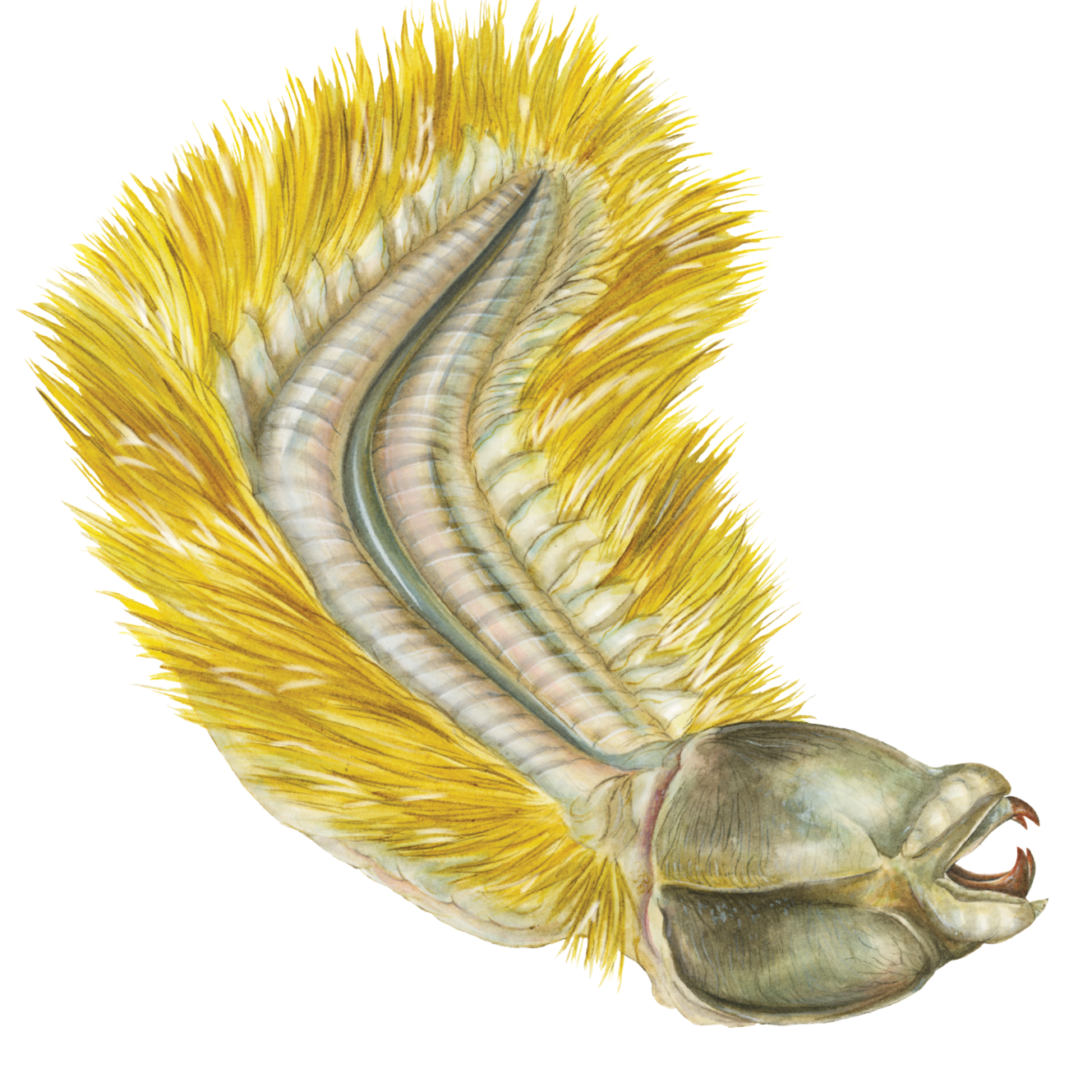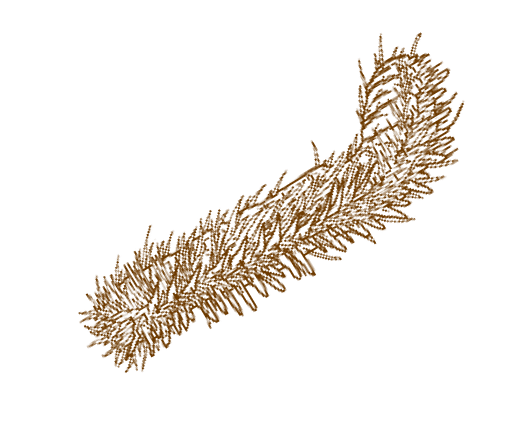
Antarctic Scale Worm
Eulagisca gigantea
(yool-a-gis-ka gi-gant-e-a)

From a distance, Antarctic scale worms appear to be beautiful creatures covered in intricate, dazzling gold ribbons. But on closer examination, you’ll find they’re actually quite terrifying! This has a lot to do with the scale worm’s most incredible evolutionary adaptation: a retractable mouth, which at first appears to be a face or head without eyes. Unless they’ve found something to eat, scale worms always keep their mouths tucked inside their bodies, out of sight.
These 8-inch-long (20 cm) marine worms belong to a group called polychaetes, more commonly known as bristle worms. No one knows exactly what purpose the brush-like bristles on their sides serve, but they may help scale worms defend themselves against predators. Or they may help the worms move across seabeds, or even help them swim.
Where They Live
Finding a scale worm isn’t easy. They live deep in the Southern Ocean near Antarctica, sometimes keeping warm in the heated water that flows out of hydrothermal vents—openings in the seafloor found near underwater volcanoes.
What They Eat
We don’t know much about what scale worms eat or how they feed themselves. Scientists assume they eat other deep-sea animals, but no one knows exactly which ones. They have a large mouth and teeth, which suggests they’re quick and aggressive hunters. Fortunately, they pose no threat to humans—we can’t even reach the deep-sea waters they live in unless we’re in heavily protected equipment, like submarines!
Conservation Status
Not Evaluated
Scientists know very little about the scale worm’s conservation status or the potential threats to its survival. But since they live in the deep sea, like blobfish and batfish, scale worms are probably endangered by similar threats, such as trawling or shifts in water temperature caused by climate change.

Fun Facts
